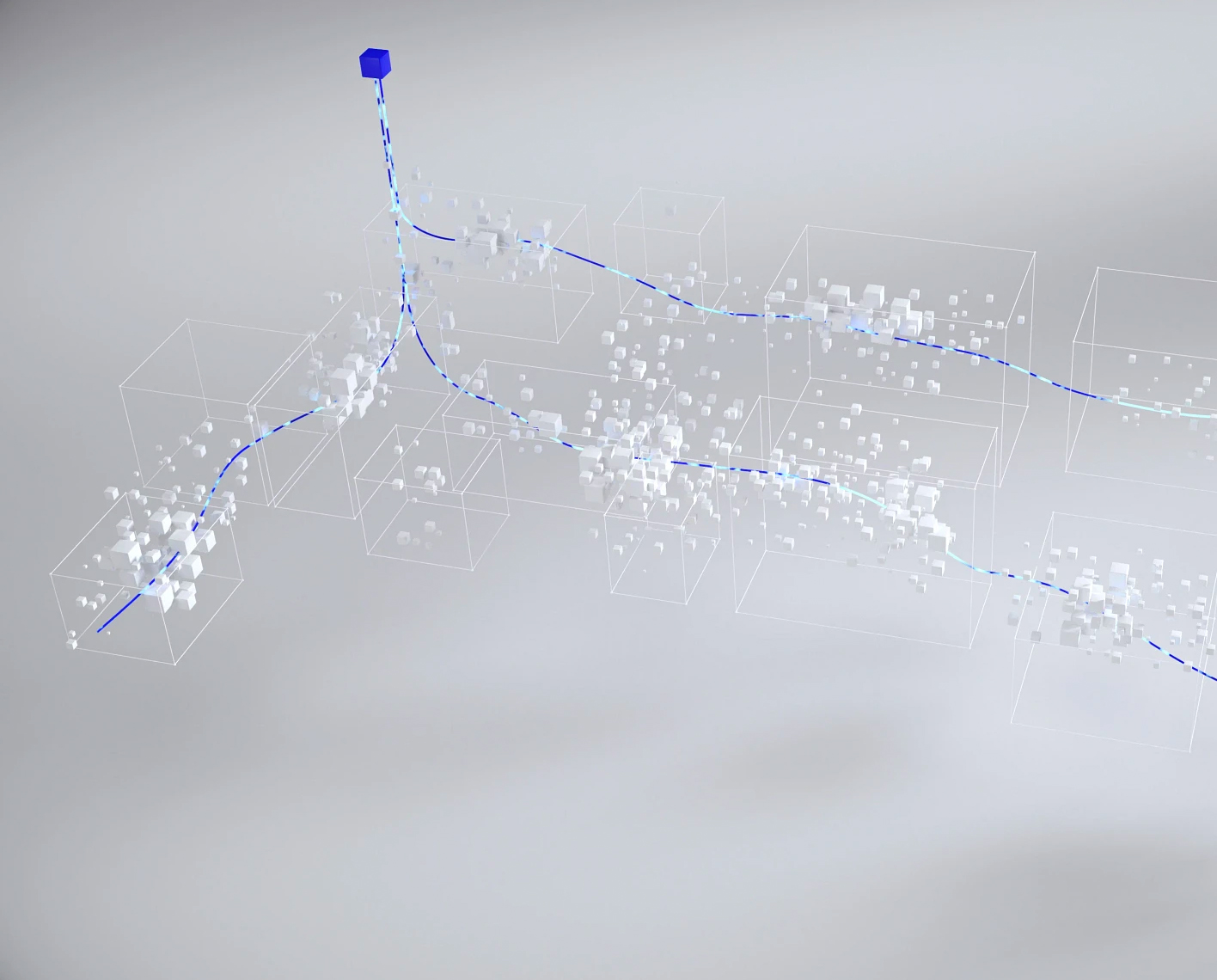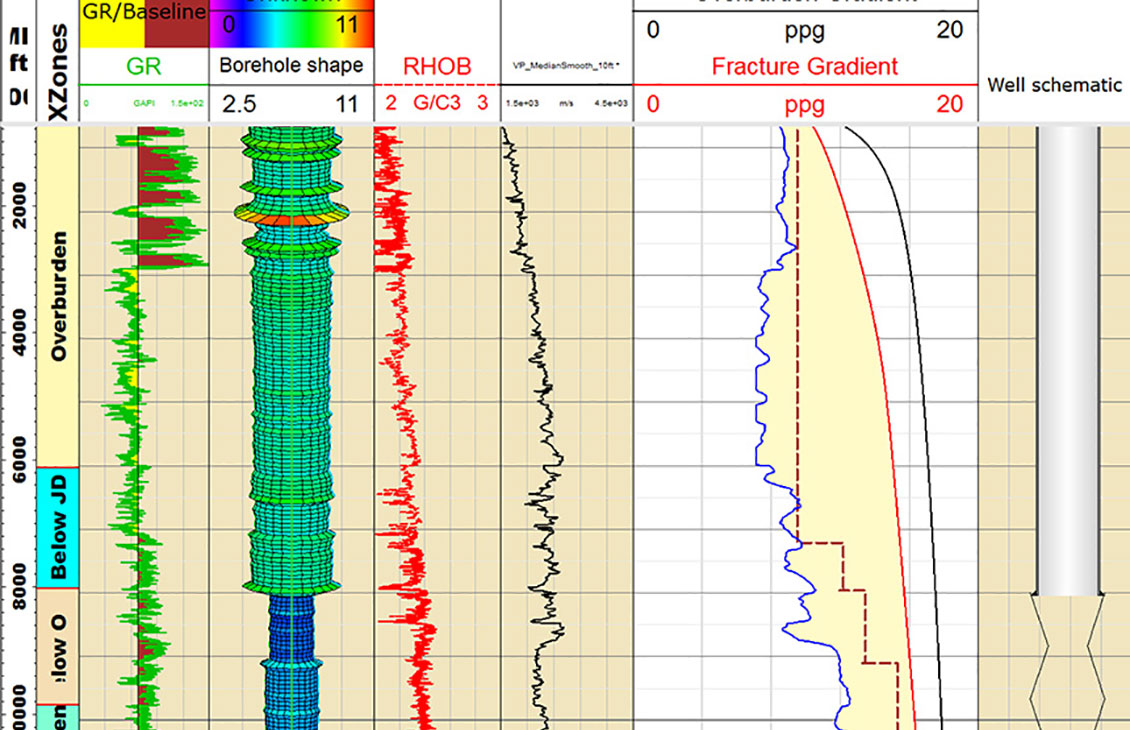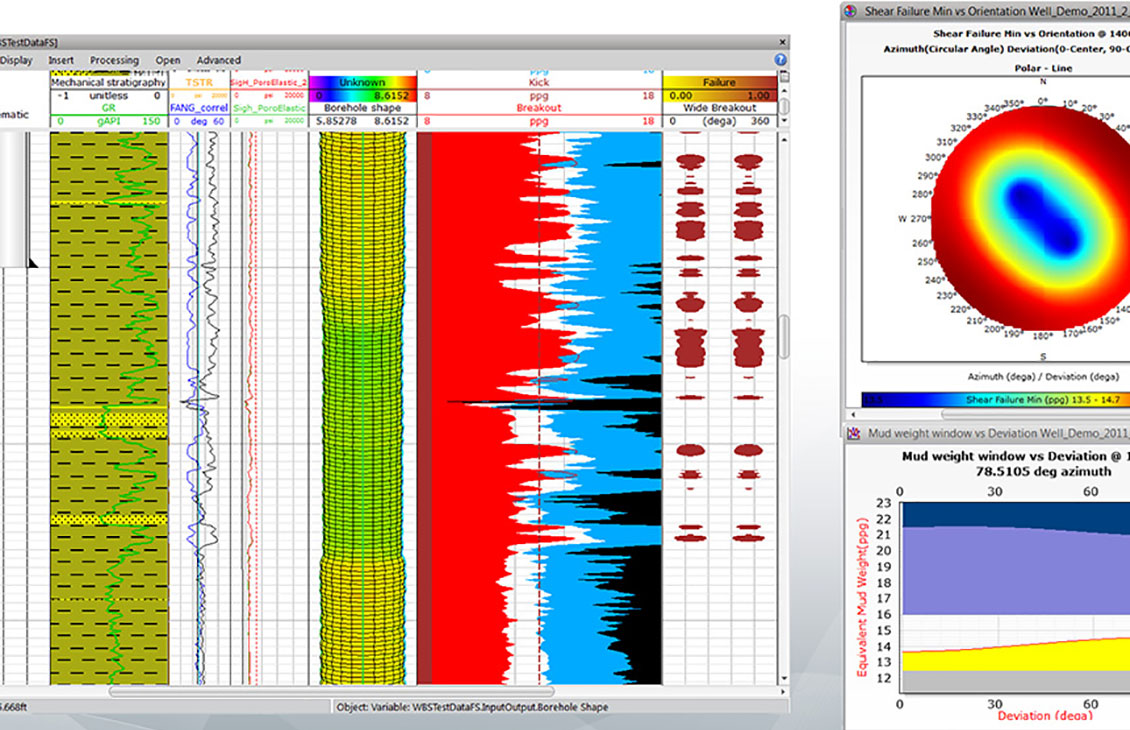Techlog Pore Pressure Prediction
Improve operational safety, visualize geomechanical outputs, and compute safe mud-weight windows.

Overview
Improve operational safety, visualize geomechanical outputs, and compute safe mud-weight windows.

Compute safe mud weight window using state-of-the-art methods for estimating pore pressure and formation fracture gradients.
Applications
- Compute safe mud weight window using state-of-the-art methods for estimating pore pressure and formation fracture gradients
- Calculate pore pressure from sonic data using the Eaton method
Benefits
- Easy mapping of trendlines to offset wells.
- Buoyancy and centroid effect computation.
- Industry standard methods for fracture gradient computation, including constant k0 method, Eaton method, Matthews and Kelly method.
- Easy integration of calibration data such as XLOT of a mini-frac.

Pore pressure calculation from sonic data using the Eaton method.
Features
Overburden stress
- Overbuden stress computation integrating synthetic and measured density using the Extrapolation, Amoco, Miller, and Traugott methods.
- Synthetic density methods from Gardner, Sayers, and Wendt.
Pore pressure and fracture gradient
- Easy mapping of trendlines to offset wells.
- Display of calibration data from drilling or other Techlog wellbore software tools such as the Techlog Formation Pressure module.
- Buoyancy and centroid effect computation.
- Monte Carlo uncertainty analysis.
Fracture gradient
- Industry standard methods for fracture gradient computation, including constant k0 method, Eaton method, Matthews and Kelly method.
- Easy integration of calibration data such as XLOT of a mini-frac.
Training

NExT Techlog training courses
NExT offers a comprehensive training program to support users of the SLB software, plugins, and other software products.

